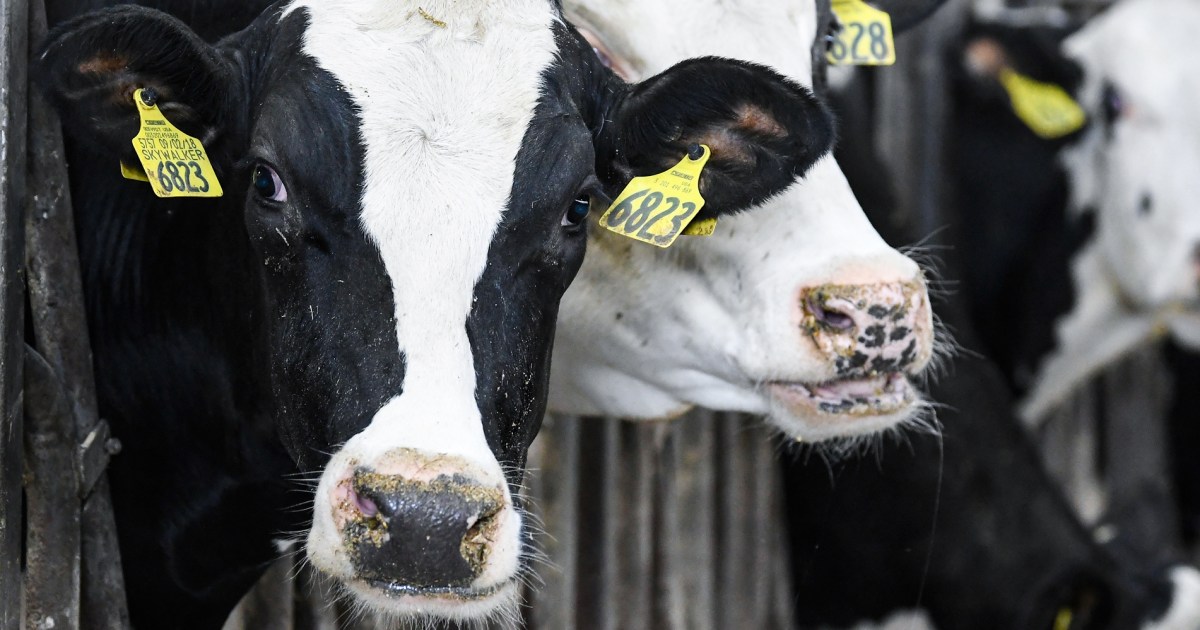A farm worker in Michigan has become the second known case of bird flu linked to the outbreak in dairy cows in the United States, the state's Department of Health reported Wednesday. The worker, whose identity has not been released, was regularly exposed to infected cattle, suffered mild symptoms and has recovered, according to local authorities.
“The current health risk to the general public remains low,” Dr. Natasha Bagdasarian, Michigan's chief medical officer, added in a statement. “We have seen no signs of sustained human-to-human transmission at this time. “This is exactly how public health should work, in the early detection and monitoring of new and emerging diseases.”
The Michigan Department of Agriculture confirmed additional cases in cows this week, bringing the total in that state to 19 herds on Wednesday.
Nationwide, at least 51 herds in nine states have been affected, according to the federal Department of Agriculture. In addition to the Michigan herds, dairy cattle in Kansas, Colorado, Idaho, New Mexico, North Carolina, Ohio, South Dakota and Texas have also tested positive for bird flu.
Federal health authorities are expected to hold a press conference on this incident this Wednesday afternoon.
On Tuesday, Centers for Disease Control and Prevention (CDC) Principal Deputy Director Dr. Nirav Shah asked state and local health authorities to continue monitoring for the flu “at heightened levels” throughout summer, even though the typical season for this disease has ended and testing for the virus is reduced to a minimum at this time of year.
Avian flu, also known as H5N1, is a type of influenza A virus.
Shah noted that the CDC recommends that states “increase the number of positive influenza A virus samples that undergo subtyping to help detect even rare cases of human infection with the H5N1 virus in the community,” the CDC said Tuesday. agency in a press release.
Since the H5N1 virus was first identified in 1997, just over 900 human cases have been documented worldwide. More than 50% of those patients died, according to the CDC. But that fatality rate may be an overestimate because cases can also be mild and possibly go undetected.
In March, avian flu was detected in a dairy plant worker in Texas. It was the first documented case of transmission of the disease from a cow to a human. The only indication that the man was sick was that he developed conjunctivitis. He did not have any of the typical symptoms such as fever, cough and sneezing, and subsequently recovered.
This is the third global case in the United States. In 2022, a Colorado inmate was diagnosed with the virus. The man worked on a commercial farm slaughtering birds suspected of being infected. His only symptom was fatigue, and he recovered with a treatment of Tamiflu.
There is currently no evidence that the H5N1 virus is spreading from person to person. None of those who lived with the Texas dairy worker became ill.
The CDC recommends that anyone in contact with dairy cattle wear protective equipment, including safety glasses, waterproof aprons, and boots that can be disinfected.

